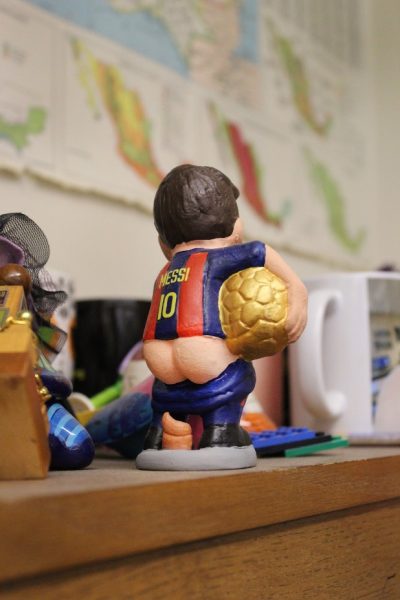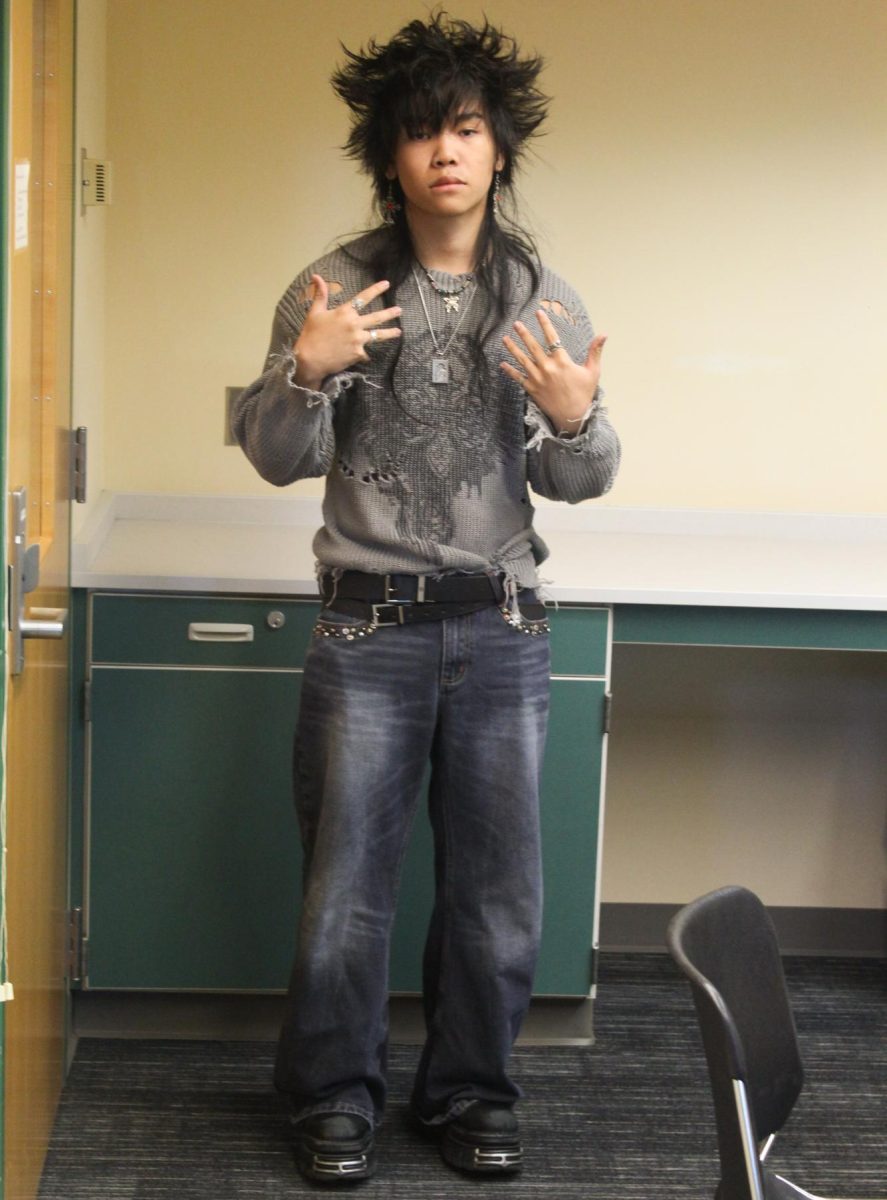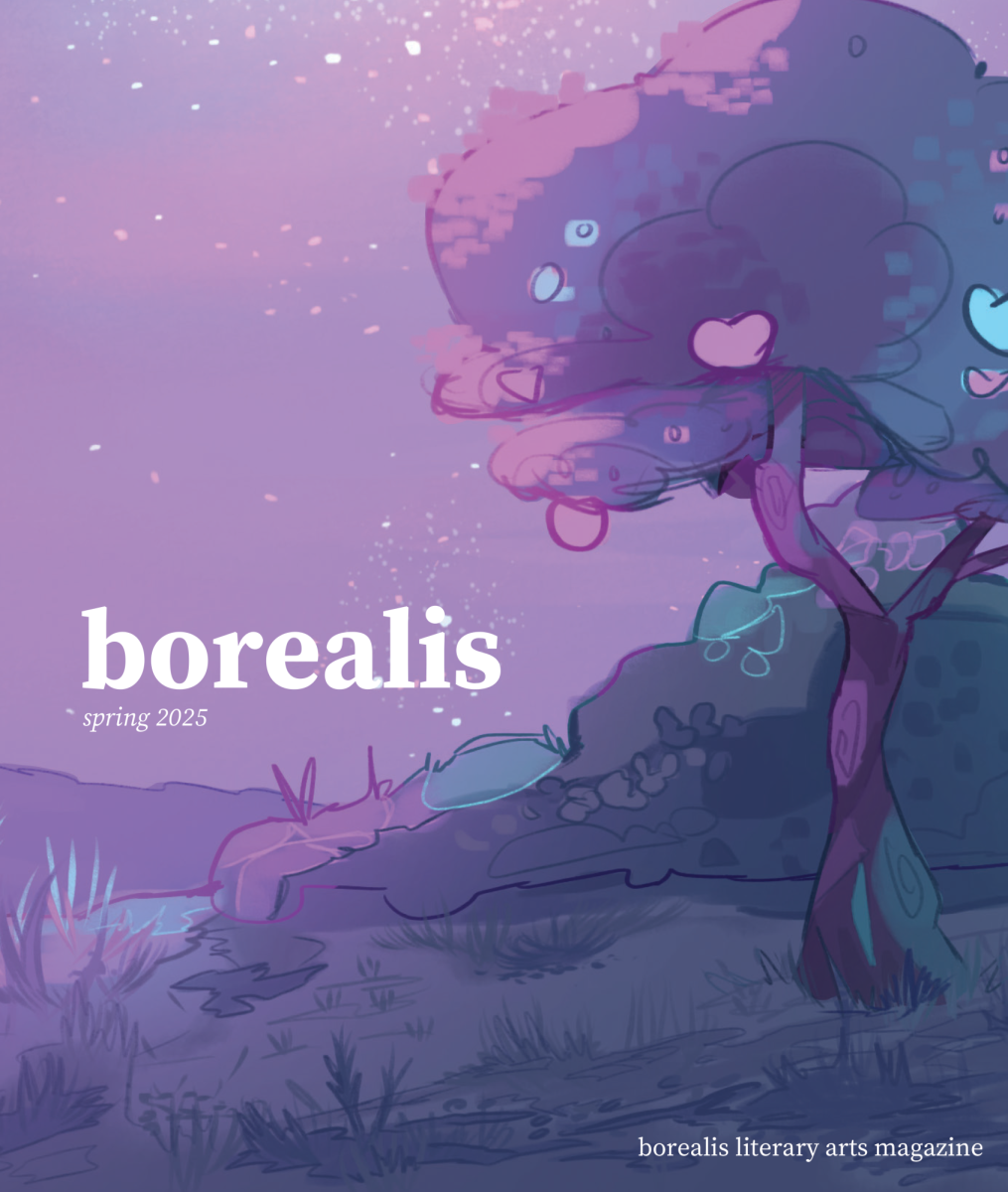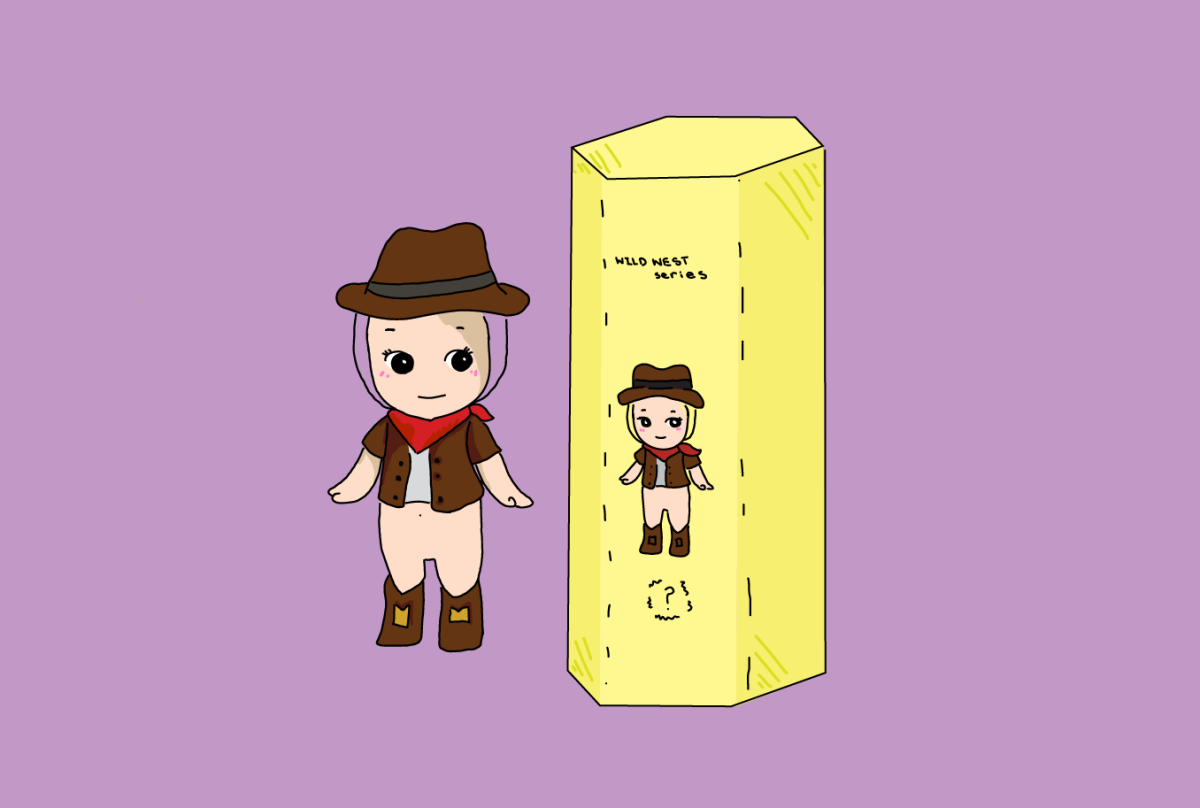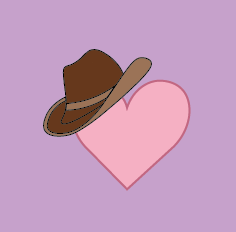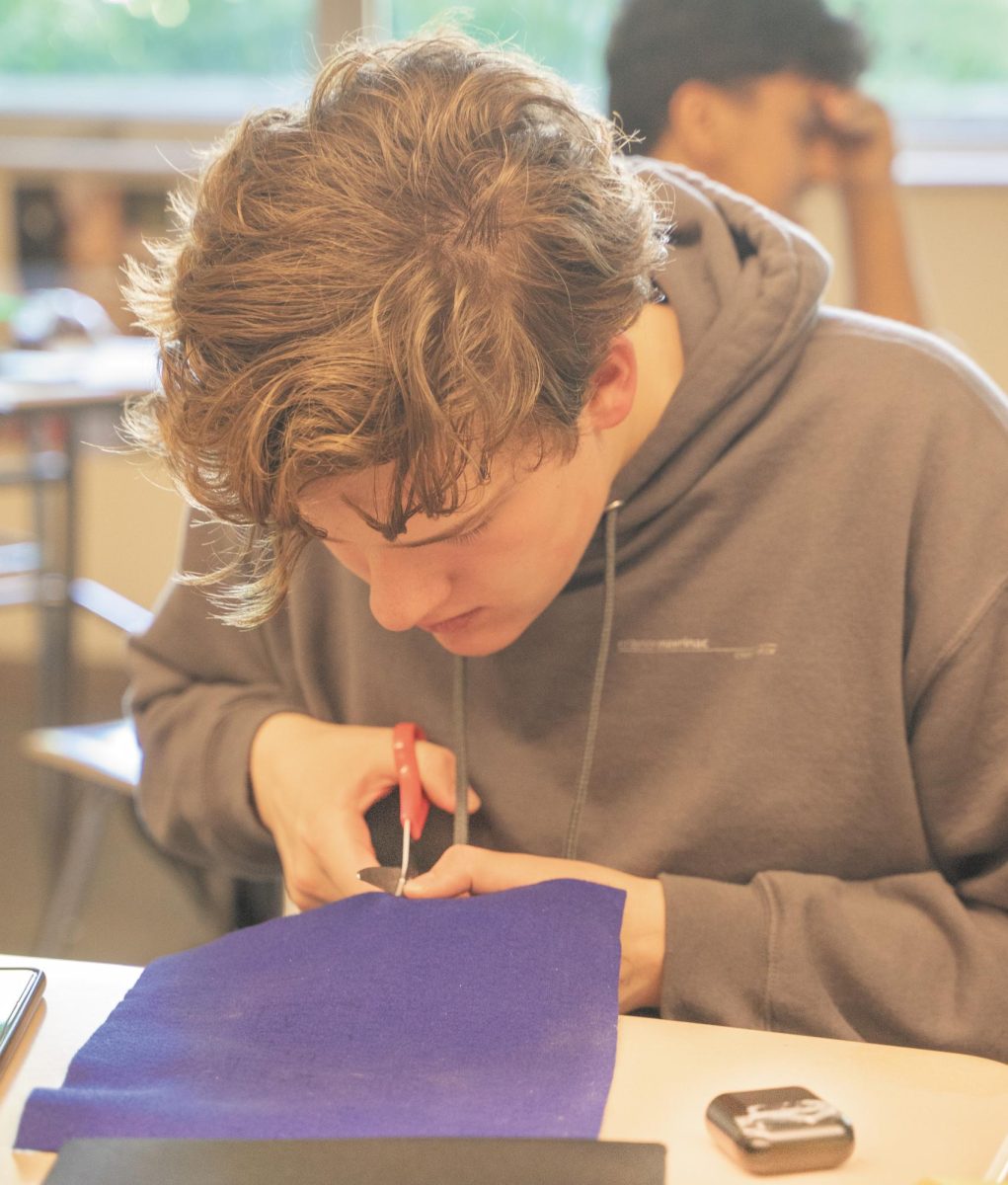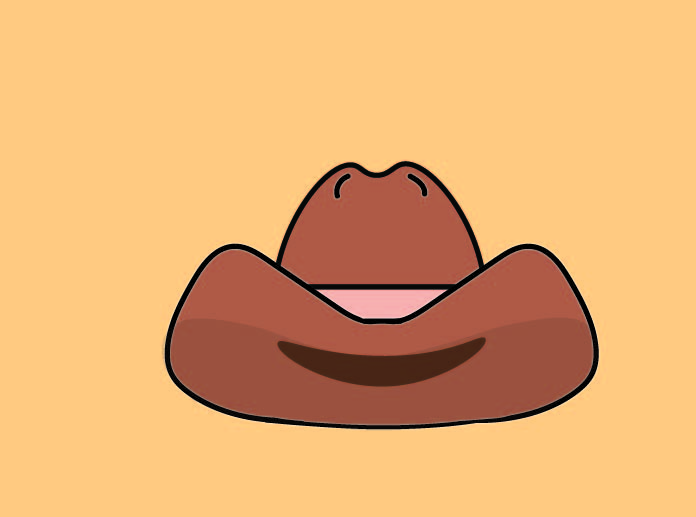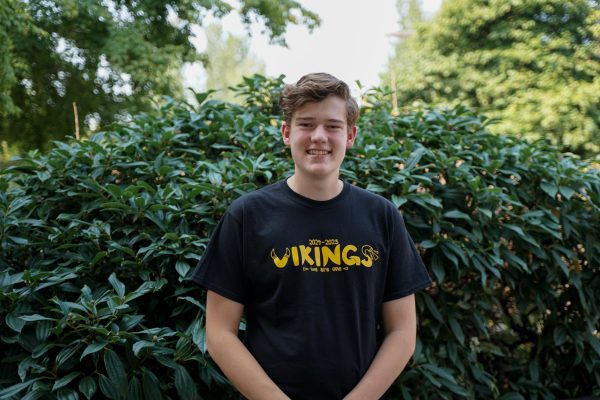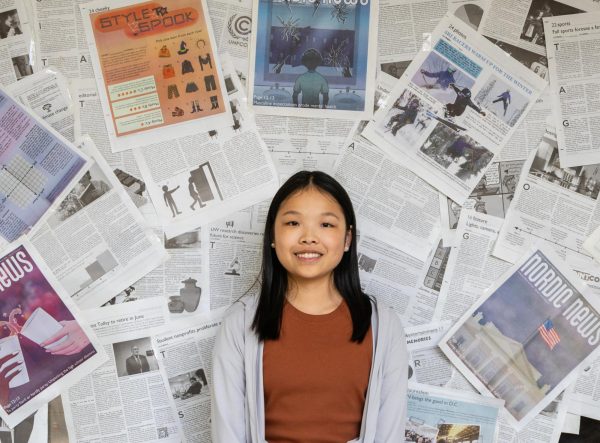Rebecca Lewis
Nestled at the back of the 700 building, Spanish teacher Rebecca Lewis’ (she/her) classroom is an explosion of vibrant color, hispanic culture and student art. Lying on a corner shelf near her desk is a trinket from the northern Spanish region of Catalonia — a caganer. Caganeros appear in nativity scenes to serve as a crass surprise to those who discover it. Although the figurines usually depict peasants, this caganer is of Argentine soccer player Lionel Messi.
“No one really ever sees unless I talk about it,” Lewis said. “Everything is just lurking in the shadows until someone notices, and then goes and touches (it). But usually the reactions are like, ‘What the heck?’”
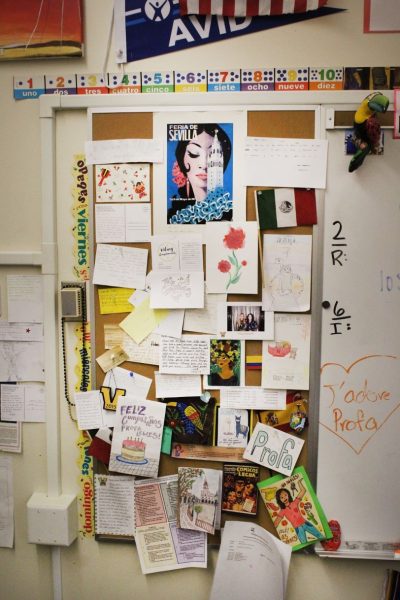 A bulletin board, blanketed in appreciation letters and mementos from her students, features one of Lewis’ favorite classroom decorations: a poster from the annual April Fair of Seville, Spain.
A bulletin board, blanketed in appreciation letters and mementos from her students, features one of Lewis’ favorite classroom decorations: a poster from the annual April Fair of Seville, Spain.
“I just always love the way the woman looks. I love that it’s got the big tower in Seville. I love the flamenco dress, how it’s like spilling out of the tower,” Lewis said. “Someday, I will go to Seville during the fair, which is always in late April, early May. We’re always in school. It’s never a good time to go. But someday I’m gonna go to Seville. Mr. McQueen went last year, because I’ve always talked about it. He went and he told me all about it, and I was like, ‘So you went and I didn’t?’ But someday I’m gonna go.”
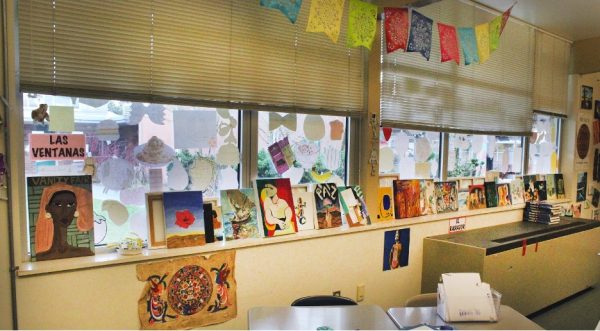
Student artwork crowds the windowsills of room 711 from an assignment Lewis likes to do with her IB Spanish 400 class where each student learns about a Hispanic artist and recreates one of their paintings.
“The students that don’t want to keep their artwork, they just donate it to my classroom. That’s why I have so much stuff on the walls,” Lewis said.
Lewis said she worries that she won’t be able to bring all of the student artwork when she moves to a portable classroom this summer.
“I’m worried I’m not gonna have enough wall space. I love having windows where I can put students’ stuff. I’m worried I’m not gonna have that,” Lewis said. “That’s one thing that kind of makes me sad about switching classrooms, is not being able to do the same.”
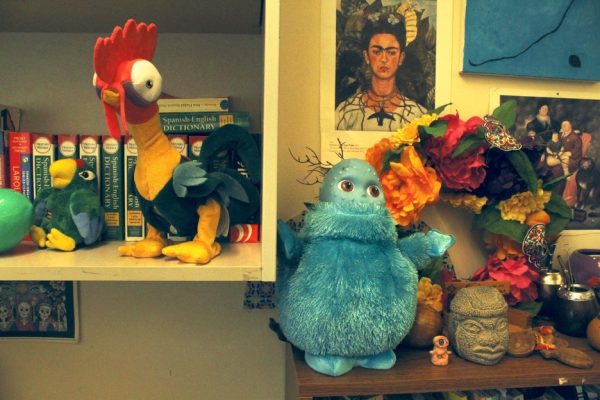
At the back of her classroom sits a unique blue furry creature, Bouba. Usually dormant, he springs to life when his hand is squeezed, dancing and waddling around while singing.
“This was on the bookcase. Some teacher that used to teach here had it, left it there and never did anything with it, and I was like, ‘I’m freaking taking it.’”
Sitting on the adjacent shelf is Hei Hei, the rooster from Disney’s Moana. When switched on, a bloodcurdling scream erupts from the toy.
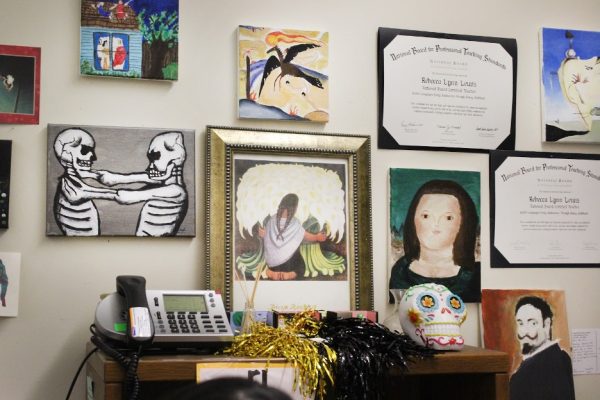
Directly above her cabinet on the back wall is a print of The Flower Seller by Mexican painter Diego Rivera. Lewis’ walls showcase her love for Hispanic artists, including Frida Kahlo and Pablo Picasso. Rivera’s painting depicts a barefoot woman who is kneeling and embracing a bundle of lilies.
“This is one of my favorite paintings of all time,” Lewis said.
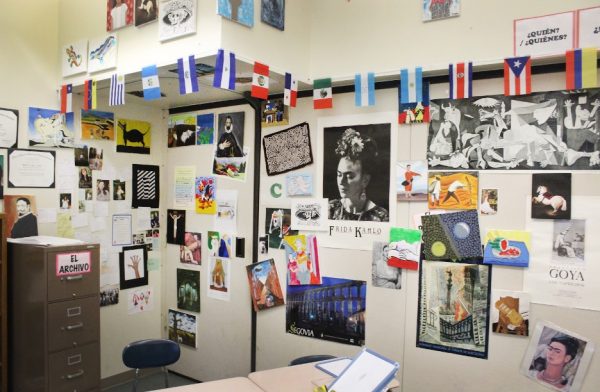
Lewis wants students to be curious in her room, so she prefers an environment where students not only want to learn but also want to explore.
“I want it to be full of life and color and fun,” Lewis said. “I don’t know, but it does need a refresh. A lot of the stuff’s been on the walls for a long time, and I’ll get that chance to do it when we move to portables in the summer.”
Thomas Donnelly
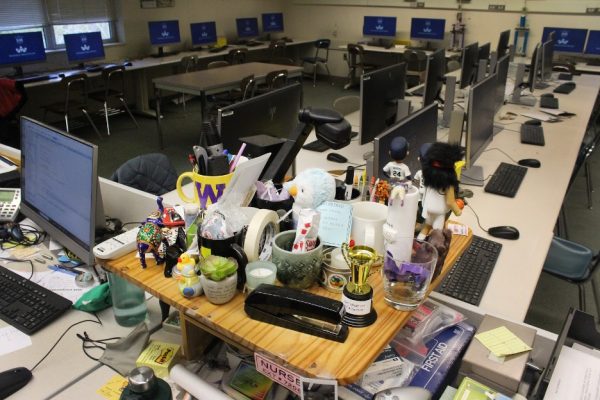
Computer Science teacher Thomas Donnelly (he/him) has decorated room 602 with memorabilia and trinkets
sourced from around the world, which cover his desk and the walls.
“If I’ve got to sign for somebody to be out for multiple weeks and they’re going someplace like China, India, Philippines, or they’re going on a fun vacation, I say, ‘You’ve got to bring something back, but it’s got to be less than five bucks,’” Donnelly said.
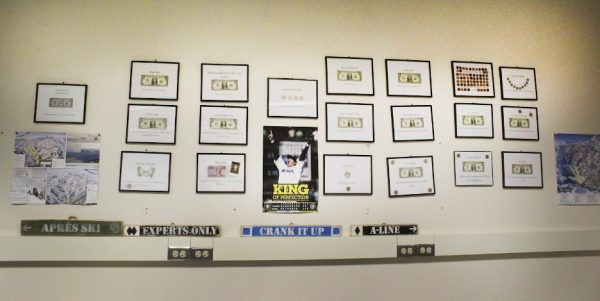
Spread across all of the walls of Donnelly’s classroom are framed dollar bills left by students, a tradition that has persisted for over 15 years. The first framed dollar was from a student named Robert, who promised Donnelly one dollar if he missed a cross-room shot into a garbage can with a crumpled piece of paper.
“I actually told him, ‘If you miss, I’m going to put it on your senior fine list.’ He missed. He actually got a dollar out,” Donnelly said.
Fifteen years later, the walls are covered in framed dollars, each gifted to Donnelly to be a part of his classroom.
“If you started leaving stuff, or I had to clean up after you, if you did something dumb, then you owe me a dollar,” Donnelly said. “(I’m) just trying to be sort of funny with it and give everybody grief.”
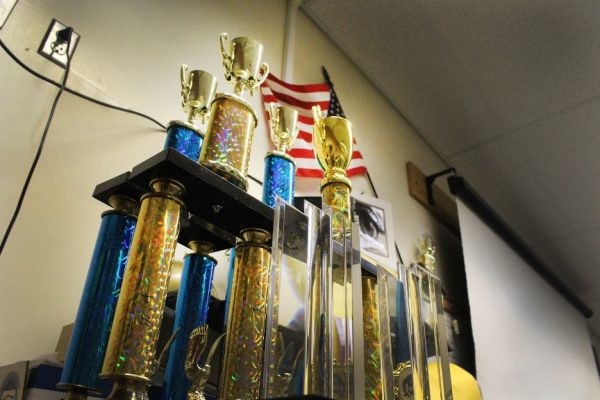
Around his classroom, Donnelly displays the 16 trophies his classes have won in the annual “Hunt the Wump
us” competition hosted by Microsoft. Starting in April, teams of programmers from various high schools in the Redmond area compete in team-based game development over the course of two months.
“It’s mostly about the experiences, really trying to work as a software dev team, trying to get everybody to work together,” Donnelly said.
The group of students from his IB Computer Science and C# classes usually win at least one trophy per year.
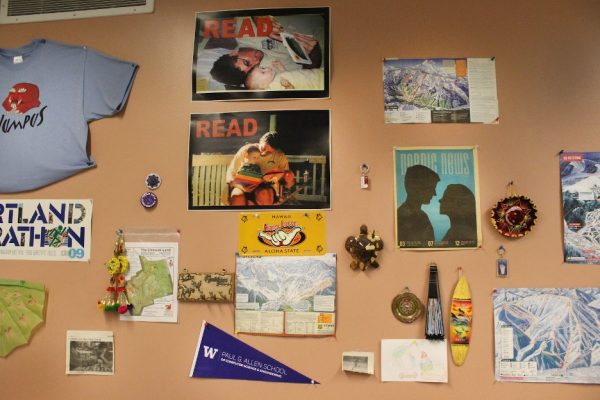
Amongst the posters and souvenirs are ski trail maps from Donnelly’s trips with his children. After graduating from the University of Washington, Donnelly decided to live in ski towns for a couple of years.
“I was young, nobody to keep me down — no, I’m just kidding,” Donnelly said. “So I wanted to live in a ski area. I figured, ‘Hey, do it while I’m young.’”
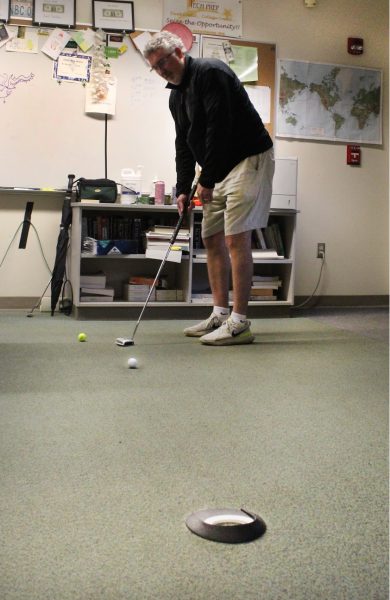
Donnelly takes a putt in his classroom (and misses the shot) using the golf clubs, golf balls and putting hole stored by his desk. Donnelly said he spends many of his weekends golfing.
“One of the guys I golfed with, he threw (the club) away, and I was like, ‘Oh, this is going to go well in the classroom.’ And so then this year, I added in the putting (practice hole),” Donnelly said.
Many of Donnelly’s students take advantage of the old clubs to practice their putting in the mornings or during class.

Donnelly’s classroom collection continues to accumulate new traditions like “Today in CS,” which was started just two years ago by a pair of friends in his IB Computer Science class. The two took a picture together every day and compiled their favorite ones into a poster, which was continued by other students the following years.
“I always want everybody to be welcome,” Donnelly said. “I think everybody’s like that. They want people to be welcome in their room.”
Suzanne Black
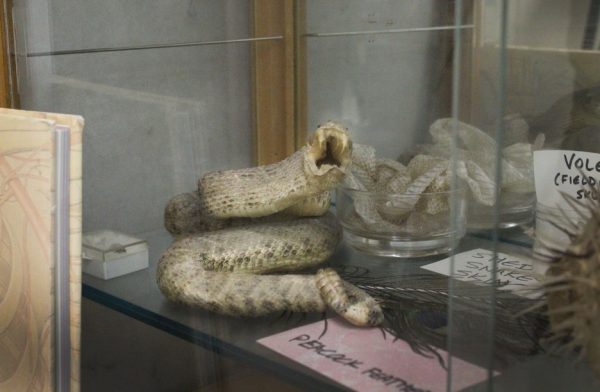
At the front of Suzanne Black’s (she/her) biology classroom in room 809 sits a cabinet filled with taxidermied and preserved animal remains. The snake, pufferfish and animal parts keep her students engaged, Black said.
“I want science to make people curious, and I want them — even if they’re looking around — to be wondering, ‘Why? What’s going on with the name of that fish?’ Or ‘What does that poster mean?’ I just want people to have questions and be interested in their world,” Black said.
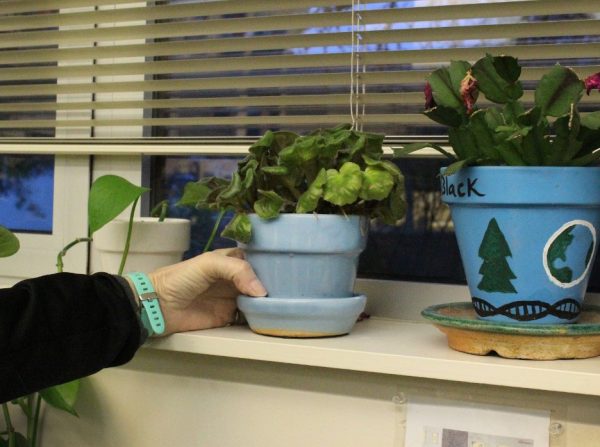
In the row of plants that adorn her window sills is an African Violet plant that Black holds particularly close to her.
“There (was) a teacher on campus whose wife passed away, and this African Violet, I think either belonged to her or was in her memory, and he moved around to too many different rooms, so he said, ‘Would you keep it?’ So I’m always super careful with it. I hope it’s doing okay,” Black said.

This potted tree of the ficus variety stands over 4 feet tall. A life-long plant, this tree is older than every
student Black has had.
“This plant was mine as a teenager, so that just gives you a sense of how old it is,” Black said. “It says ‘I’m 47,’ I think it’s probably much older than that now.”
The plant followed her from her college dorm to her first apartment and now to her classroom.
“I’m always telling students, get a plant and take it with you to college, because it’s like a little touch of home,” Black said.
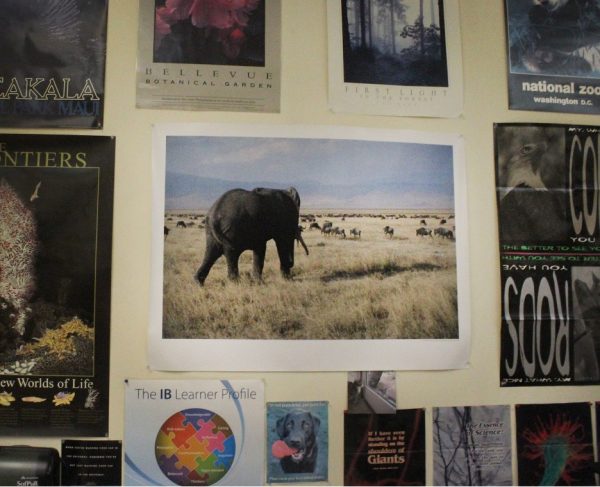
The back wall is layered with an impressive assortment of posters.
“Lots of posters, lots of posters. I look at some of them and I think about albums I had or places I visited,” Black said.
One particularly special poster is from Ngorongoro Crater in Tanzania, Africa, a place she connected with when she visited.
“I’ve been (to Africa) six times. It will change your life. Most Americans don’t connect with the continent of Africa, and it’s so amazing,” Black said. “It’s about as close to the Garden of Eden as you could imagine, just nothing but animals, as far as the eye can see.”
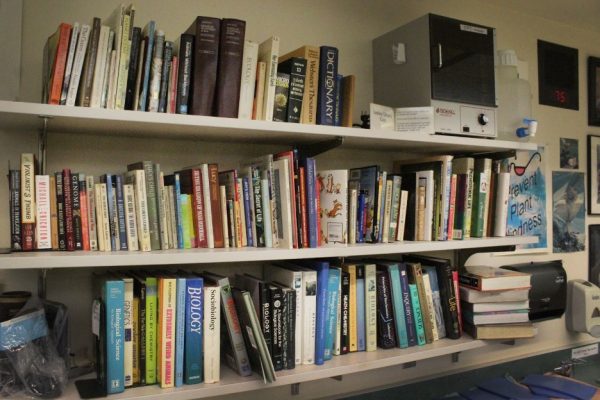
Black hosts a lending library from her book collection, loaning books to students who want to learn from the wide range of biology-related textbooks and paperbacks on her shelves.
“I know the temptation is just a Google, but maybe because I’m old school, I still like books that are well written and don’t overwhelm,” Black said. “I like for students to see that if something in their text is not making sense to them, just try a different author’s explanation.”
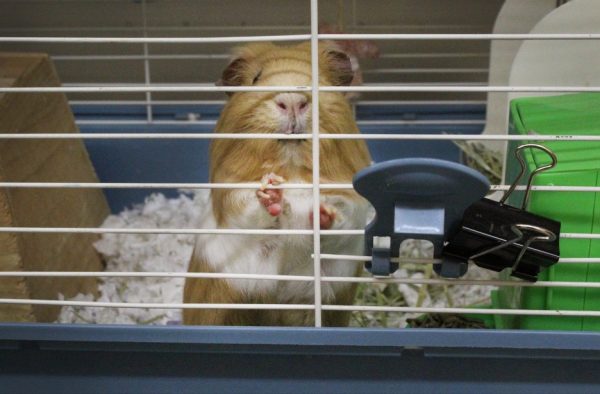
Fern, the classroom guinea pig, grabs the bars of her cage in anticipation of a treat. At seven years old, she’s considered an elderly guinea pig but still has energy to run around her enclosure.
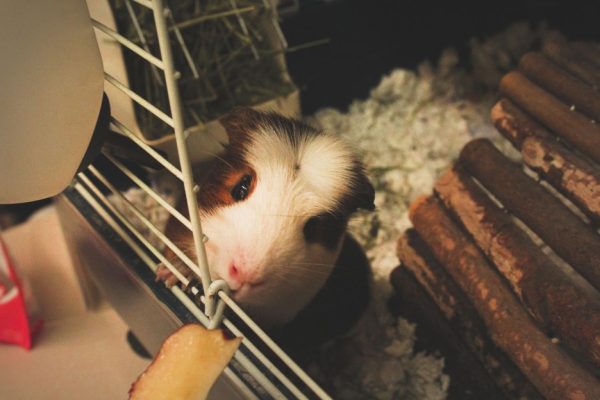
The two-year-old Chibi reaches to grab an apple slice, his favorite snack. He dragged it into his den to gnaw off pieces and quickly finished it.



